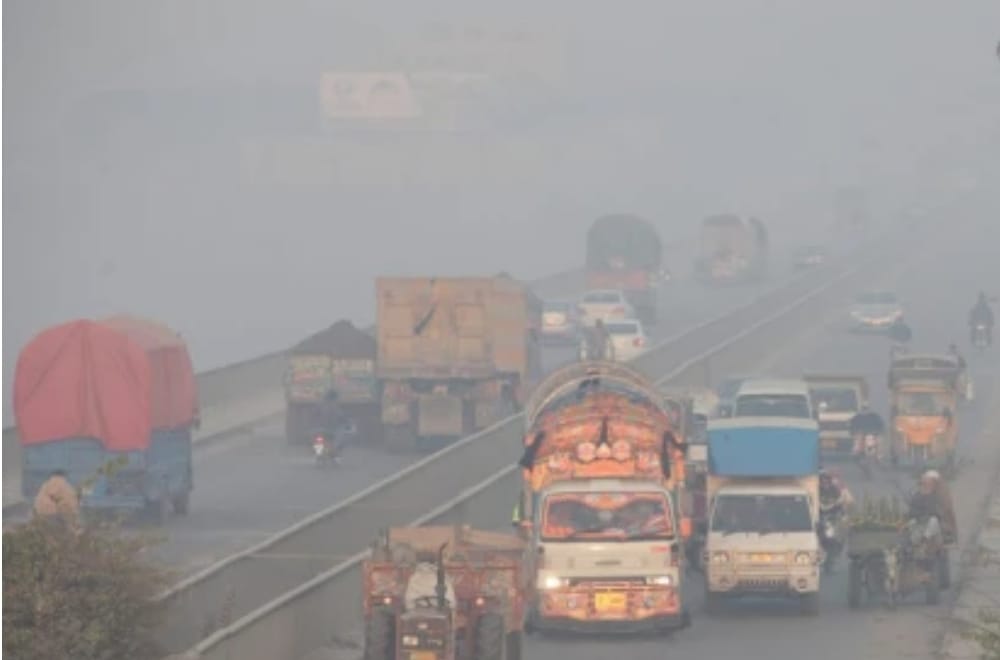
“Smog Season Returns — Lahore Struggles to Survive the Haze”
Why Is Lahore the 2nd Most Polluted City on Earth

Introduction: Lahore’s Struggle to Breathe Clean Air
Lahore, the cultural heart of Pakistan, has sadly become one of the most polluted cities in the world, ranking second globally in recent air quality reports. Once known for its gardens, heritage, and lively streets, the city is now suffocating under layers of toxic smog. The big question remains: why is Lahore’s air quality worsening every year, and can it be saved before it’s too late?
According to IQAir and Air Quality Index (AQI) data, Lahore’s AQI frequently exceeds 400–500, falling into the “hazardous” zone. This level poses a severe health risk to everyone — children, adults, and the elderly alike. Schools close, flights are canceled, and daily life slows down as the air turns grey and heavy.
Main Causes Behind Lahore’s Pollution Crisis
The causes of Lahore’s pollution are complex and interconnected, driven by industrial emissions, traffic smoke, crop burning, and urban dust. Here’s a deeper look into the major factors damaging Lahore’s air quality:
1. Vehicular Emissions and Traffic Chaos
Lahore’s population has skyrocketed, bringing millions of vehicles onto the roads. Outdated cars, diesel buses, and rickshaws emit toxic gases such as carbon monoxide and nitrogen oxides. Poor fuel quality and weak emission control systems add more pollutants into the city’s atmosphere.
2. Industrial Smoke and Brick Kilns
Factories and brick kilns surrounding Lahore burn low-grade coal and rubber, releasing thick black smoke filled with harmful particles. Despite government warnings, many continue to operate without proper filters or monitoring systems.
3. Crop Burning Across Punjab
Every year, farmers in Punjab burn leftover rice stubble to prepare for the next planting season. This seasonal practice sends enormous clouds of smoke into the air, combining with fog to form dense smog over Lahore during October and November.
4. Construction and Urban Dust
Ongoing mega projects, constant road repairs, and real estate expansion create a permanent dust cloud over the city. The absence of proper waste disposal and green belts worsens this dust pollution.
Smog in Lahore: A Yearly Environmental Disaster
Each winter, Lahore becomes trapped in a toxic smog blanket. As temperatures drop and wind slows, pollutants fail to disperse and settle over the city. Visibility drops sharply, affecting flights, driving, and outdoor life.
Smog causes eye irritation, coughing, sore throat, asthma attacks, and long-term lung damage. Hospitals report spikes in respiratory patients every November and December. Sadly, this has now become an annual routine rather than a rare emergency.
Government Action and Public Response
The Punjab government has launched several short-term measures to fight pollution in Lahore:
- Temporary shutdown of brick kilns and factories during smog season
- Odd-even vehicle policy to reduce traffic congestion
- Smart monitoring units to track industrial emissions
- Fines for crop burning and open waste burning
However, experts argue these are temporary fixes, not permanent solutions. Lahore needs long-term strategies, such as transitioning to clean energy, developing mass public transport, and enforcing environmental regulations.
Public awareness has grown thanks to social media campaigns like #LahoreSmog, #SaveLahoreAir, and #CleanAirPakistan, but stronger collective action is essential.
Health and Environmental Impact
Air pollution in Lahore has turned into a public health emergency. According to the World Health Organization (WHO), long-term exposure to polluted air leads to heart disease, lung cancer, and premature deaths.
Children, pregnant women, and senior citizens are the most vulnerable. Many residents now use air purifiers, N95 masks, and sealed indoor environments just to survive daily life. The loss of green spaces has also destroyed Lahore’s natural ability to clean its own air.
Can Lahore’s Air Quality Be Restored?
Despite the grim statistics, Lahore can still recover. Other global cities like Beijing and Delhi faced similar air crises but improved through strict emission laws, electric vehicles, and industrial regulation.
Lahore must take the same path — focusing on:
- Promoting electric cars and public transport
- Enforcing industrial compliance and green technologies
- Launching mass tree plantation drives
- Improving waste management and urban planning
If these steps are taken consistently, Lahore can once again become the “City of Gardens” instead of a city under grey skies.
Conclusion: It’s Time to Save Lahore’s Air
Lahore’s pollution is not just an environmental problem — it’s a human survival issue. Every breath carries invisible toxins that threaten life and health. The time for awareness has passed; it’s now time for urgent action.
With the right mix of policy, technology, and citizen responsibility, Lahore can breathe again. But that hope will only become reality if everyone — from government to public — joins the fight for clean air and a healthier future.




